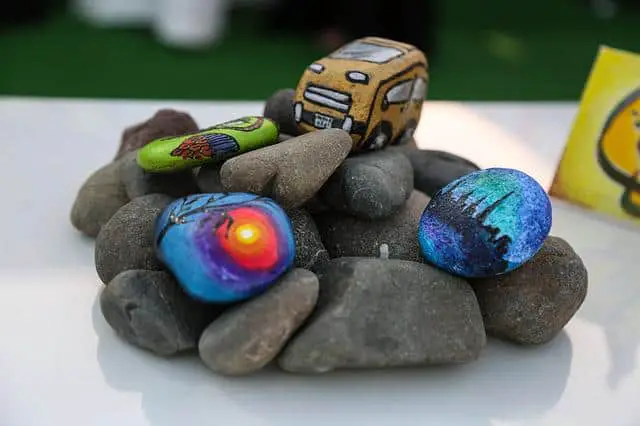Acrylic paint is a very versatile art medium that can be used on almost any surface. Although many artists prefer canvas for acrylic painting there are many other options, often unknown to the artists but perfect for acrylic painting.
In general, acrylic paint can be used on surfaces such as wood, paper, cardboard, glass, metal, plastic, ceramic, stones, fabric, walls, and leather, other than canvas. Any surface is perfect for acrylic painting as long as it achieves your art goals and is prepped well for painting.
Exploring new surfaces for acrylic painting will make you find a creative way of doing art. There are some surfaces that closely resemble canvas, which you can use if canvases are out of your reach. No matter the surface you choose it’s critical to prepare it correctly before acrylic painting.
What to use instead of a canvas?
Canvas is the go-to surface for many artists when it comes to acrylic painting. However, there are times we cannot waste canvases for our test pieces or simply when we need to try something new for painting. In that case, we can go for canvas substitutes or alternatives.
Canvas alternatives that are closest to canvas are wood panels, hardboard, and MDF panels in my opinion. They have a rigid and flat surface where you can paint just like on a canvas. Wood panels are often cradled with a solid wood frame to prevent warping or bending.
Although many artists opt for canvas when doing acrylic painting, you can also go for creative surfaces such as glass and even rocks. This means that you do not have to use a canvas to create beautiful artwork, as there are many surfaces you can use if you think a little bit out of the box.
14 Best canvas substitutes for acrylic painting
Below I have mentioned some great surfaces you can try acrylic painting in place of canvas. I have added some details on canvases in the last part of the article as well. I am repeating that no matter what surface you choose, it is important to prep it properly for acrylic paint to stay.
1. Wood Panels
Wood panels are popular among artists who prefer a solid surface for their paintings. It has a different texture and grain. Wood panels can be sanded, gessoed, and primed for acrylic painting. When using wood panels for acrylic painting, choosing smooth boards with a consistent texture and minimal knots or imperfections is essential.
These wood panels can also be used to support canvas, paper, or other flexible materials by gluing them to the wood panel. Matte gel mediums such as Liquitex® Matte Gel is best to adhere the flexible material to wood. If not you can also use all-purpose glue/ Elmer’s glue.
Oil paintings, in particular, have a long history of being supported by wood panels. In reality, wood panels were mostly used as painting support before the discovery of the canvas. As wood panels are more stable than canvas they make the best surface for oil paintings. The lifespan of the painting is long as wood panels are less likely to warp or sag over time.
Panels can be purchased pre-primed or unprimed and can be found at art supply stores in various sizes. One of the best choices would be Blick Studio Wood Panels. Wood panels can also be custom-made to your desired size and shape, providing a unique surface for your painting.
Acrylic paint is permanent on wood panels. Prepare the surface by sanding the wood and applying 2 -5 coats of gesso. Then apply acrylic paint and let it cure for 1-2 weeks. Finish acrylic painting with a clear coating. Let it dry thoroughly.
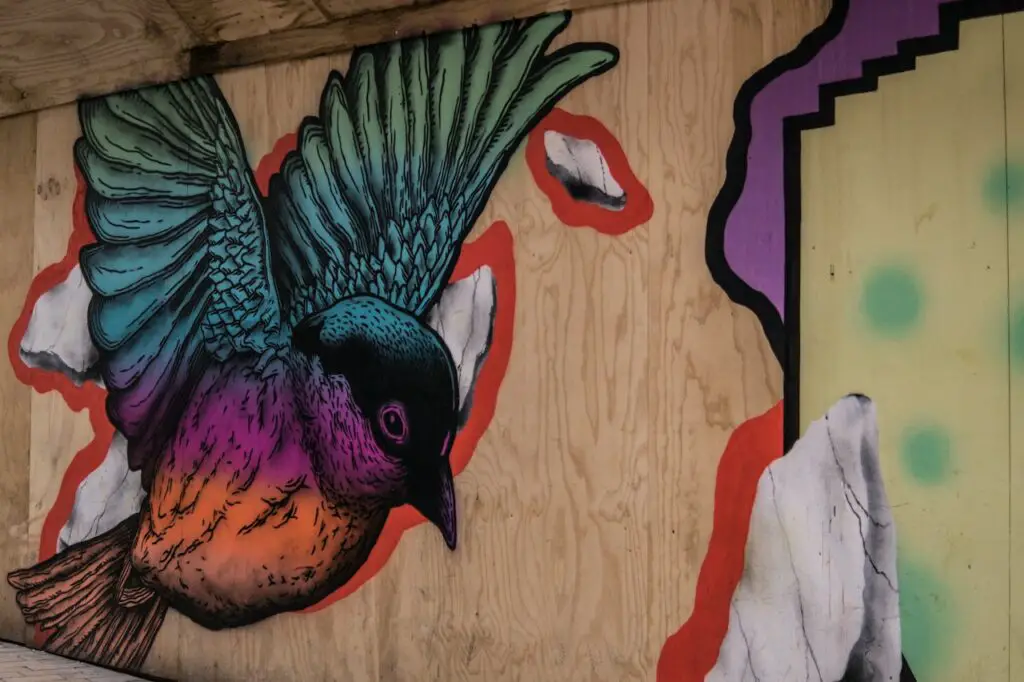
One downside of wood panels will be transportation and difficulty in cropping the wood panel after painting. These are some reasons artists thought of switching from wood panels to canvas. Canvases when taken out from the frame, are easier to transport, and even be cut and cropped according to artists’ likings.
2. Hardboard and MDF panels
High-density fiberboard (HDF) or hardboard panels are created by compressing and fusing together wood fibers under high pressure and heat. Hardboard panels are a common choice for painting since they are smooth, flat, and rigid. In comparison to some other types of wood panels, they are also cheaper.
Wood fibers are crushed and bonded together with resin to create MDF (Medium-density fibreboard) panels. They are typically more stable and less likely to warping or break than other types of wood panels because they are thicker and more evenly spread. MDF panels can be used for a variety of painting styles and techniques and are less expensive than certain other types of wood panels.
Depending on the tastes of the artist and the particular requirements of their artwork, each type of wood panel has its own special advantages.
3. Mixed media paper
Mixed media paper is designed to work well with different types of art mediums, such as acrylic paints, watercolors, markers, and ink. That is why it has got its name ‘mixed media’ paper. Mixed media paper is a good choice for acrylic painting also and it is a lot cheaper than canvas. This means that you can experiment with different painting techniques and styles without breaking the bank.
The mixed media paper allow you to work with different mediums to create a variety of effects in a single painting. Also, mixed media paper has a slightly rougher texture than traditional drawing paper, making it ideal to holding the paint and prevent from running or smudging.
Most importantly, it can withstand multiple layers of acrylic paint. You can build up layers and create texture without worrying about the paper tearing or warping. Overall, mixed media paper is an excellent choice for acrylic painting.
4. Watercolor paper
Acrylic artists use watercolor paper as the painting surface. The weight of the paper helps prevent buckling when the paint is applied, and the rough texture of some watercolor papers can produce a feeling similar to canvas. The most common weights of watercolor papers are 190 gsm, 300 gsm, 356 gsm, and 638 gsm.
If you are using watercolor paper for acrylic paintings, it s best to stretch them first before painting on them. This will perfectly stretch and flatten the surface and prevent the paper from buckling.
Stretching can be done by soaking the watercolor paper in water and then laying it on a flat board. Now you can tape the edges of the wet watercolor paper onto the board with paper tape. Let the watercolor paper dry and start painting. Do not panic if the watercolor paper starts buckling when wet. It will perfectly flatten when dry.
Usually, there are two types of watercolor paper available in stores called hot-press and cold-press watercolor paper. Hot-press watercolor paper is created by using hot metal rollers to press the paper fibers while the pulp is still wet. It also produces a surface that is suited for detailed work with a smooth, fine-grained texture and is less absorbent. Illustrations of plants, portraits, and calligraphy frequently utilize hot-press paper.
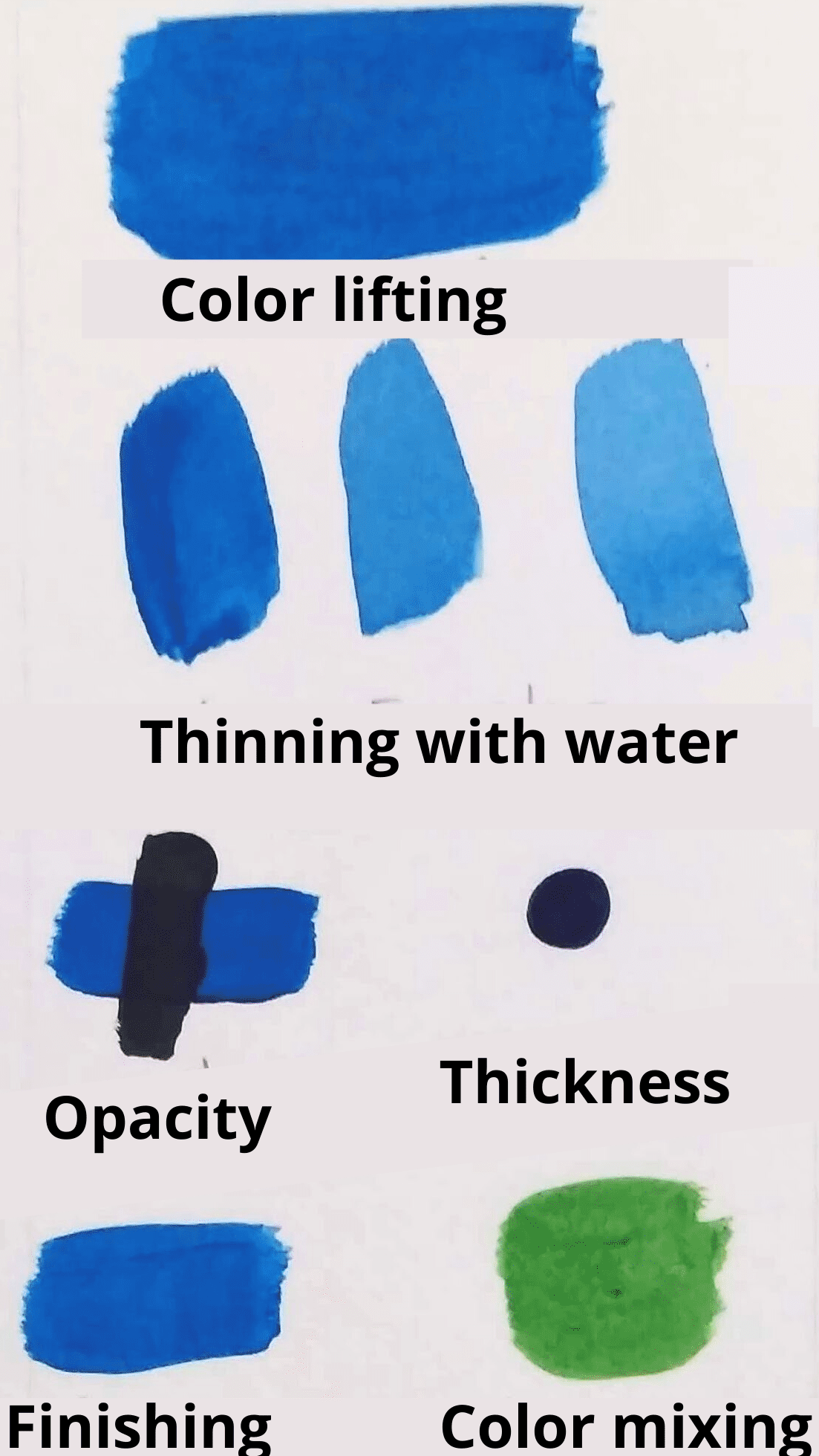
On the other hand, cold-press watercolor paper is created by pressing the paper fibers between cold rollers. This procedure makes the surface rougher with a more visible texture, which is perfect for applying expressive washes and combining colors. It is also more absorbent than hot-pressed watercolor paper. For a variety of methods and styles, cold press paper is the most preferred option among watercolorists as well as acrylic artists.
I have written a whole article about using acrylic paint directly on a surface. It will explain in detail if we can use acrylic paint straight out of the tube and if we need to prime a surface before using acrylic paint.
5. YUPO paper
YUPO paper is a synthetic, non-porous, waterproof, and tree-free paper that is commonly used for a variety of creative applications, including acrylic painting. It is made from polypropylene pellets and has a smooth, non-absorbent surface that allows the paint to sit on top of the paper, creating vibrant, high-gloss effects.
The YUPO paper is very strong and it resists tearing and buckling. Because of this, YUPO paper is an excellent surface for acrylic painting. It also allows a higher degree of control and precision. It is also easy to clean and can be used multiple times, making it a cost-effective and environmentally friendly option.
Other than acrylic paint, YUPO paper is used with watercolor, alcohol ink, graphite, silkscreen, offset printing, and graphite art. You can get 10 sheets of 9″ * 12″ YUPO paper for affordable prices from Blick.
6. Cardboard
Although cardboard is essentially heavy-duty paper, it is not designed to work well with paints. Your cardboard art projects will look excellent for longer if you prepare the surface and apply a primer like gesso before painting.
If you are using cardboard for acrylic painting, make sure to seal the cardboard first to prevent paint absorption into the paper fiber. You can apply gesso over the paper as the sealant. Matte medium and matte gels can also be used.
Acrylic paints used with a paintbrush or sprayed on are the best for cardboard. It is an excellent option if you’re looking for a cheap and lightweight alternative to canvas.
7. Glass
Glass is another option for acrylic painting. It provides a smooth surface and can give your artwork a unique and modern look. But you must handle it carefully and deliberately to avoid smudging or scratching the paint. Additionally, glass is a reflective surface, so it is best to paint in a well-lit area to prevent glare and to view the painting from multiple angles as you work.
However, painting on glass can be challenging in terms of durability. Painting tends to scratch off, especially if the surface got wet. However, there is a proper way of painting on glass to last long. You can find this painting procedure in my article; How to stick acrylic paint on glass (and keep it off).
8. Metal
You can paint on metal sheets, either aluminum or copper, to create a unique and eye-catching surface. It can be challenging to paint with acrylics on metal as a substitute for canvas.
Further, metal can have a shiny surface, so it is vital to prevent glare and examine the painting from various angles as you work by painting in a well-lit environment. Remember that metal can transfer heat and electricity as well. Therefore, practicing proper safety measures while using metal as a surface for painting is essential.
In general, for durable acrylic paint application on metal, you need to, prime the metal with a water-based industrial metal primer, and let the primer fully cure for 2 weeks. When painting lightly sands the industrial primer and apply gesso. Then paint over and let it cure for 3 days before sealing. I have written a whole article on painting on metal and kept it off. You can read that article for a great start.
9. Plastic
You can acrylic paint on plastic sheets like clear acrylic or PVC as a smooth and durable surface. Acrylic paint is permanent on plastic with proper surface preparation and sealing of paint. As plastic is rigid and smooth, first sand the surface and apply 2 coats of an industrial water-based primer. Sand between each coat. Now, paint with acrylic paint and let it cure for 1 week, and seal with a clear coating.
I have written a whole article about how to acrylic paint on plastic. You will find different ways of acrylic painting on plastic there.
10. Ceramic
Ceramics is also an interesting surface to paint with acrylic paint. Unglazed ceramic can be prepared for acrylic painting by simply applying gesso on the surface, like on canvas. You can apply 1 to 2 coats of gesso. Let the gesso dry overnight and start painting. Choose a good quality gesso, otherwise, it will be difficult to paint on ceramic.
I have written a full guide on painting ceramics with acrylic paint. You will also find a video guide that shows the full process of painting a nice design on a ceramic bowl.
11. Rocks or stones
You can use natural rocks or stones like slate or marble as a painting surface. Painting on stone or rock is an enjoyable craft and is loved by many. Rocks or stones are more durable surfaces, and perfect for acrylic painting.

Also, remember that not all stone types may be appropriate for painting. Painting on some types of stone may be challenging due to their high pores or rough surface. Finishing a small test patch before moving on to a bigger area is advised to ensure the stone is appropriate for painting.
12. Wall
You can paint on the walls to create large-scale artwork or murals. But Before starting, make sure to clean the surface of the wall and apply a matte gel medium to seal the wall. his will reduce the amount of paint needed, otherwise, more paint will soak into the wall.
When the matte medium is fully dry, apply one or two coats of gesso, and let it dry overnight. Paint with acrylic on the next day. Acrylic paint can be applied using a brush, roller, or spray gun on the wall.
If you are planning to paint on concrete, it must be fully dry and cured for 8 to 12 weeks. All moisture should be gone at the time of painting. Also, there shouldn’t be any silicones or waterproofing cement paint. These will lessen adhesion.
Also, acrylic paint is water-resistant, so it won’t easily be damaged by moisture or humidity. It makes a good choice for bathrooms, kitchens, and basements where walls are exposed to water and steam.
13. Fabric
Acrylic paint is permanent on the fabric. Before painting, remove the sizing of the fabric by pre-washing to remove any sizing or finishes that may interfere with the paint adhesion. Now you can paint it. After painting, wait for at least 4 days before washing the fabric until the paint cures. Hand washing and hanging dry is the best way to ensure the durability of the artwork on cloth.
You can also prime fabric with gesso before painting. It is an excellent option if you’re looking for a flexible surface. You need to avoid materials that are too thin or stretchy, as they may not hold up well in the painting process.
14. Leather
Using acrylic paint on leather can be a fun and creative way to personalize or customize your leather items. But it’s essential to choose the right type of leather. Acrylic paint works best on smooth leather that has been treated and prepared for painting. If the leather is untreated or heavily textured, the color may not adhere properly, and the finished result may not be as smooth or even as you’d like.
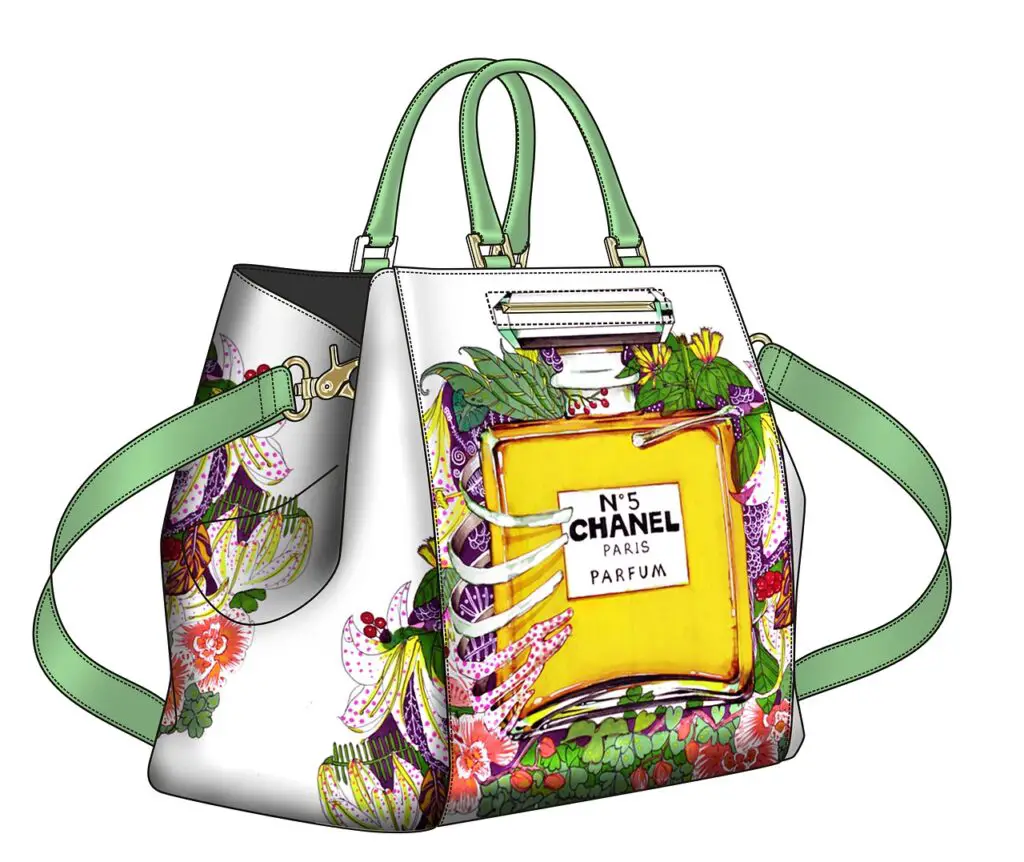
How to prepare these surfaces for painting?
Remember, whichever surface you choose, you’ll need to prepare it properly before painting with acrylics. If not acrylic paint peeling could happen. Different processes are required to prepare it depending on the kind of material and the state of the surface.
Preparing a surface for acrylic painting involves a few key steps, including cleaning, sanding, priming, painting and finally sealing. Follow these steps to create a good surface for the paint to adhere to and help ensure that the final result is as desired and long-lasting.
Step 1: Clean the surface
First, you must clean the surface. It’s essential to clear the surface of any possible dirt or dust before you start painting. Use a mild soap and water mixture or a cleaner made specifically for your surface. If you are painting on a shiny rigid surface, make sure to remove any oil or grease on the surface with alcohol.
Step 2: Sand the surface
It is essential to sand the surface to create a tooth and texture for the acrylic paint to stick, especially if painting on a smooth rigid surface like glass and metal. Sand the surface lightly in a circular motion with a fine-grit sandpaper. After sanding, clean up any dust.
Step 3: Apply primer or gesso
Applying a primer like gesso will help to produce a solid surface for the paint to adhere to and will also help to cover up any flaws or color differences in the surface. Apply the primer evenly using a brush or roller. You can apply 2 to 3 coats of gesso or more with one hour of drying time between each coat. Sand between each coat of gesso for a smoother finish. Before moving on to the next step, let the primer dry thoroughly overnight.
I have written a whole article about acrylic gesso drying time. You will know how to prime your painting support with gesso perfectly considering all other influencing factors.
Step 4: Apply the base coat or colored ground
Use a base coat or colored ground for your painting to have a consistent color basis and to fill up any holes or voids in the surface. Usually, you can use white acrylic paint or any other color of acrylic paint that you like to use for the background of the artwork, as a base coat.
Apply the base coat or the colored ground evenly using a brush or roller. Before moving on to the following step, let the base coat completely dry.
Step 5: Keep on painting
Apply the paint in thin, even layers. You can use a brush, roller, or airbrush to get the required effect. Before painting the next layer, let the previous one completely dry.
Step 7: Seal or varnish the painting
After finishing the painting, you can seal the surface or apply a protective topcoat to protect it further. The paint can be shielded from deterioration and kept from cracking or flaking with the help of a transparent acrylic varnish or specialty sealer.
Even though you followed all these steps, there can be problems with paint adhesion. Therefore the best method will be performing an adhesion test on a smaller area of work, to test the grounds before painting on a large scale. You can find the steps for performing the adhesion test in the article; What will acrylic paint not stick to (experiment results)?
What is the best surface for acrylic painting?
There are no hard and fast rules in art. Therefore the surface you paint on doesn’t matter as long as it supports the art you are creating. However, most artists prefer to use canvases for acrylic painting because of several reasons, such as:
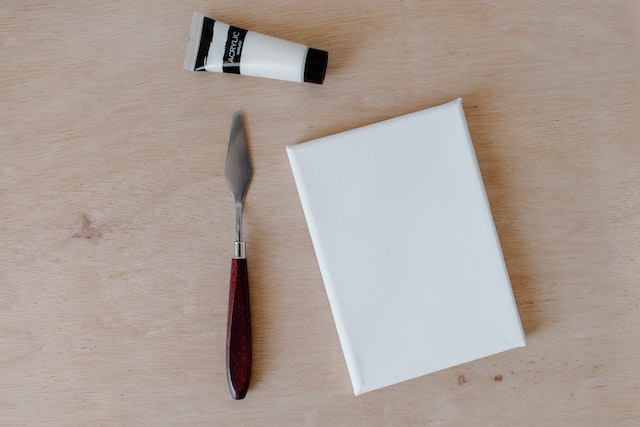
Less absorbent: Canvas does not absorb paint into the canvas fiber due to the gesso primer. Gesso creates a surface tooth that acrylic paint can adhere well but not absorb. This helps to save paint and make paint application smoother.
Durability: In comparison to other materials, like paper, canvas is a strong material. It can stand the test of time well and handle the painting process really well.
Versatility: Canvas comes in various textures, ranging from rough to smooth, allowing artists to choose the surface that best suits their needs. Additionally, the canvas can be stretched onto a frame or mounted on a board, providing a stable surface for painting.
Longevity: Canvas paintings are long-lasting and can be enjoyed for generations, retaining their color and vibrancy when prepped correctly, used with quality materials, and properly stored and protected.
Affordability: Canvas is a relatively inexpensive material compared to other surfaces, such as oil painting panels, making it an excellent option for artists on a budget.
No matter how skilled or amateur you are, the canvas can provide an excellent surface for creating beautiful, long-lasting paintings.
Different types of art canvases
If you are interested in painting on canvases, below are some titbits of it. There are several different canvases depending on the fabric material used and the material arrangement. Following are some of them.
Cotton canvas: This is a traditional and popular choice for artists. Cotton canvas is made from 100% cotton, is strong, durable, and has a tight weave, making it ideal for acrylic painting, but not so much for oil painting. However, cotton canvas is less expensive than linen canvases.
Linen canvas: This particular canvas is known for its strength and durability because it is created from flax plant fibers. This resilient fiber has more durability than cotton. Linen fibers are more resistant to moisture, temperature changes, and aging than cotton fibers. Some artists prefer linen canvas because it has a more refined and classic appearance and a tighter weave than cotton canvas. Linen canvases are ideal for both oil and acrylic paintings.
Synthetic canvas: This kind of canvas is noted for its low cost and durability and is created from synthetic fibers like polyester or nylon. It is best for artists who are just starting or working on smaller projects.
Canvas board: This is a canvas that has been primed and stretched over a cardboard or foam core. Canvas board is a more portable option than stretched canvas and is ideal for artists who prefer a rigid surface for their paintings.
Canvas pads: These are separate canvas sheet pads that can be taken out, framed, or mounted. Canvas pads are excellent for plein air painting and for artists who prefer to work on flexible surfaces.
Cotton duck canvas board: This rigid board is made from cotton duck canvas that has been primed, stretched, and placed over a foam or cardboard core. It offers a surface comparable to the traditional stretched canvas but lighter and more portable. Cotton duck canvas is a thick, cotton fabric with a simple weave. Compared to regular canvas, duck canvas is more tightly knit.
Primed canvas rolls: This type of canvas comes in a roll and can be cut to size and stretched by the artist. It allows artists to create custom-sized canvases, making it ideal for large-scale artwork.
Conclusion
By exploring less common surfaces for your acrylic paintings, you can unlock a new world of creative possibilities and bring a fresh perspective to your work. You can take your art to new heights and create truly one-of-a-kind pieces that showcase your style and creativity. So don’t be afraid to think outside the box and try something new – the results could be truly inspiring and transformative!

